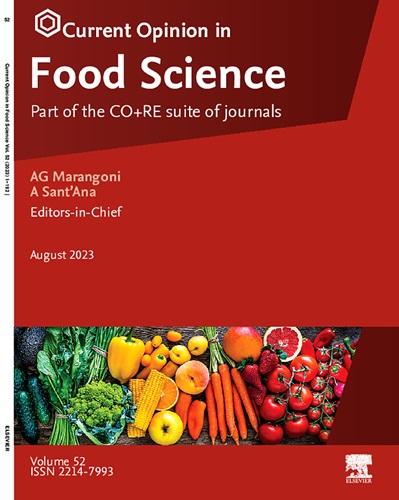分析定量微生物风险评估:从建模方法到知情决策和风险沟通
IF 9.1
1区 农林科学
Q1 FOOD SCIENCE & TECHNOLOGY
引用次数: 0
摘要
定量微生物风险评估(QMRA)将微生物行为的定量数据与整个食品链(包括消费者阶段)的产品和工艺条件相结合。这一方法旨在加强食品安全控制,并支持消费者就食品安全和公共卫生进行沟通。本文回顾了用于估计生长参数(滞后期、生长速率、最大人口密度)的各种建模方法,以确定消费时刻的剂量,并估计疾病的概率和疾病病例的数量。此外,本综述说明并比较了模型选择、模型假设和建模方法对风险估计的影响,并讨论了各种敏感性和情景分析。这些风险评估的分析揭示了风险评估中需要分析的相关方面,并展示了qmra的结果如何支持决策,以减轻风险和发展基于风险的沟通,最终提高食品安全。本文章由计算机程序翻译,如有差异,请以英文原文为准。
Analysing quantitative microbiological risk assessments: from modelling approaches to informed decision-making and risk communication
A quantitative microbiological risk assessment (QMRA) combines quantitative data on microbial behaviour with product and process conditions throughout the entire food chain, including the consumer phase. This approach aims to strengthen food safety controls and to support consumer communication regarding food safety and public health. This article reviews various modelling approaches used to estimate growth parameters (lag phase, growth rate, maximum population density) to determine the dose at the moment of consumption and to estimate the probability of illness and the number of illness cases. Also, this review illustrates and compares the effects of model choices, model assumptions, and modelling approaches on risk estimates and discusses various sensitivity and scenario analyses. These analyses of the risk assessment shed light on relevant aspects to analyse in risk assessments and show how outcomes of QMRAs can support decision-making to mitigate risks and to develop risk-based communication, ultimately enhancing food safety.
求助全文
通过发布文献求助,成功后即可免费获取论文全文。
去求助
来源期刊

Current Opinion in Food Science
Agricultural and Biological Sciences-Food Science
CiteScore
18.40
自引率
4.00%
发文量
157
审稿时长
92 days
期刊介绍:
Current Opinion in Food Science specifically provides expert views on current advances in food science in a clear and readable format. It also evaluates the most noteworthy papers from original publications, annotated by experts.
Key Features:
Expert Views on Current Advances: Clear and readable insights from experts in the field regarding current advances in food science.
Evaluation of Noteworthy Papers: Annotated evaluations of the most interesting papers from the extensive array of original publications.
Themed Sections: The subject of food science is divided into themed sections, each reviewed once a year.
 求助内容:
求助内容: 应助结果提醒方式:
应助结果提醒方式:


